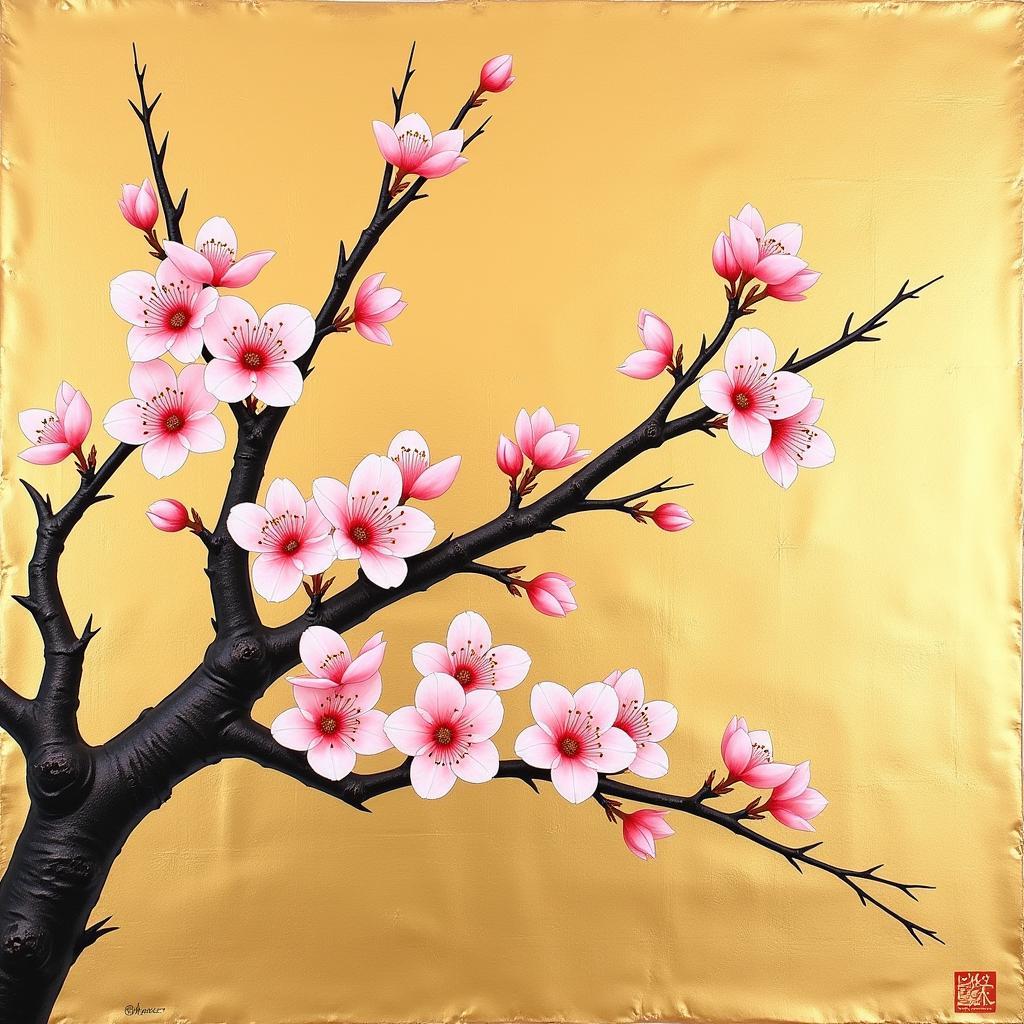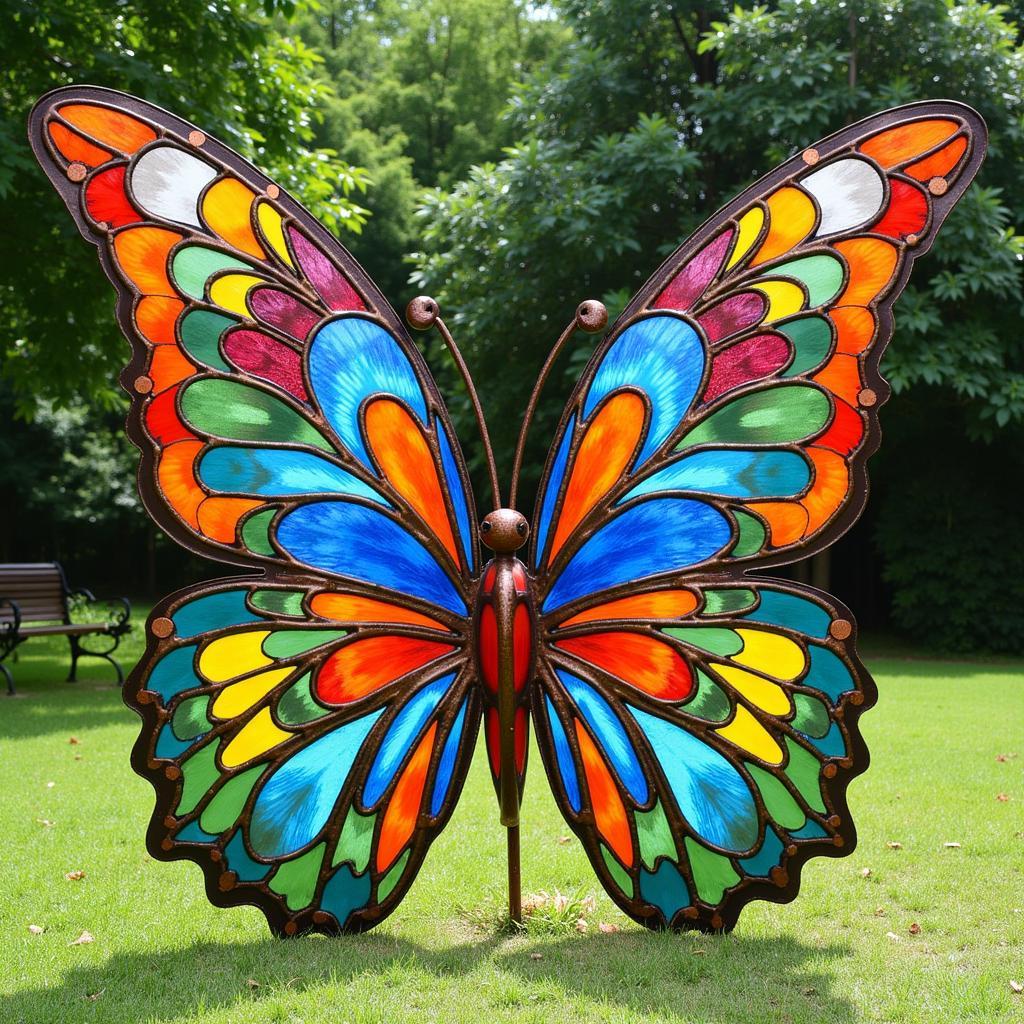Art of the Ephemeral: Exploring the Beauty of Japanese Cherry Blossom Art
The delicate blush of pink against a backdrop of vibrant spring greens, the Japanese cherry blossom, or sakura, has captivated artists for centuries. More than just a flower, it represents a powerful symbol of renewal, transience, and the fleeting nature of beauty. This exploration delves into the captivating world of art inspired by the Japanese cherry blossom, uncovering its cultural significance and artistic interpretations.
 Traditional Japanese painting of cherry blossoms in bloom
Traditional Japanese painting of cherry blossoms in bloom
A Flower Imbued with Meaning: Symbolism of the Cherry Blossom in Japanese Art
In Japanese culture, the cherry blossom is more than just a beautiful bloom; it embodies profound cultural and philosophical ideals. The ephemeral nature of the sakura, blooming briefly before scattering on the wind, serves as a poignant reminder of the transient nature of life itself. This concept, known as mono no aware, is central to Japanese aesthetics, emphasizing a bittersweet appreciation for the beauty found in impermanence.
This symbolism is deeply intertwined with Japanese art. From ancient woodblock prints to contemporary paintings, sakura motifs appear across various art forms, each piece reflecting the flower’s rich cultural significance.
A Journey Through Time: Cherry Blossoms in Japanese Art History
The presence of cherry blossoms in Japanese art can be traced back centuries. One of the earliest and most iconic examples is found in the Heian period (794-1185). During this era, the sakura became a prominent motif in literature and poetry, influencing artistic representations.
The Edo period (1603-1868) saw the rise of ukiyo-e, woodblock prints depicting the floating world of urban pleasure. Cherry blossoms featured prominently in these prints, often depicted in scenes of picnics beneath blossoming trees (hanami) or gracing the costumes of courtesans. Artists like Hiroshige and Hokusai masterfully captured the ephemeral beauty of sakura through vibrant colors and dynamic compositions.
Beyond the Canvas: Cherry Blossoms in Japanese Design and Fashion
The allure of the sakura extends beyond traditional art forms. It permeates Japanese design and fashion, finding expression in textiles, ceramics, and even contemporary fashion.
- Textiles: Kimonos adorned with cherry blossom motifs are highly prized, often worn for special occasions to symbolize new beginnings and beauty.
- Ceramics: Delicate sakura designs grace teacups, plates, and vases, adding a touch of elegance and seasonal charm to everyday objects.
- Fashion: Contemporary Japanese designers often incorporate cherry blossom patterns and motifs into their creations, reflecting the flower’s enduring appeal in modern society.
Experiencing the Ephemeral: Cherry Blossoms in the Modern World
The beauty of Japanese cherry blossom art lies in its ability to connect us with the ephemeral nature of life itself. Whether through traditional woodblock prints, modern paintings, or the delicate designs on a teacup, the sakura continues to inspire artists and viewers alike.
To truly appreciate the art of the Japanese cherry blossom is to embrace the beauty of transience and find joy in the fleeting moments of life. Just as the sakura blooms briefly before scattering on the wind, so too are we reminded to cherish the present and find beauty in the ever-changing tapestry of our existence.
Frequently Asked Questions about Japanese Cherry Blossom Art
1. What are some of the most famous Japanese artists who depicted cherry blossoms in their work?
Many renowned Japanese artists have incorporated cherry blossoms into their masterpieces. Some notable figures include Katsushika Hokusai, known for his iconic “The Great Wave off Kanagawa” and his numerous woodblock prints featuring sakura; Utagawa Hiroshige, famous for his landscape prints and series like “Fifty-three Stations of the Tōkaidō,” which often included cherry blossom scenes; and Tosa Mitsuoki, a prominent painter of the Tosa school, known for his delicate and intricate depictions of sakura in traditional yamato-e style.
2. How has the depiction of cherry blossoms in Japanese art evolved over time?
While the symbolism and appreciation for cherry blossoms have remained relatively consistent, their artistic representation has evolved alongside changing artistic styles and techniques. From the stylized depictions of the Heian period to the dynamic compositions and vibrant colors of ukiyo-e prints in the Edo period, each era brought its unique approach. In contemporary Japanese art, artists continue to explore new and innovative ways to interpret the beauty and symbolism of sakura.
3. Where can I see examples of Japanese cherry blossom art?
Many museums and galleries worldwide house impressive collections of Japanese art, including pieces featuring cherry blossoms. Some notable institutions include the Tokyo National Museum, the Kyoto National Museum, the Metropolitan Museum of Art in New York City, the British Museum in London, and the Art Institute of Chicago.
4. Are there any online resources where I can learn more about Japanese cherry blossom art?
Yes, numerous online resources offer insights into Japanese art and culture, including the significance of cherry blossoms. The website for the Asian Art Deco movement provides a comprehensive overview of this influential style, which often incorporated cherry blossom motifs. You can also find a wide selection of Japanese art t shirts featuring cherry blossom designs, offering a unique way to appreciate and wear this captivating symbol.
Need Help with Your Artistic Journey?
We’re here to support your creative endeavors! Contact us at Phone Number: 02462573573, Email: [email protected] or visit us at Savico Megamall, 7-9 Đ. Nguyễn Văn Linh, Gia Thụy, Long Biên, Hà Nội 10000, Việt Nam. Our dedicated customer support team is available 24/7 to assist you.



